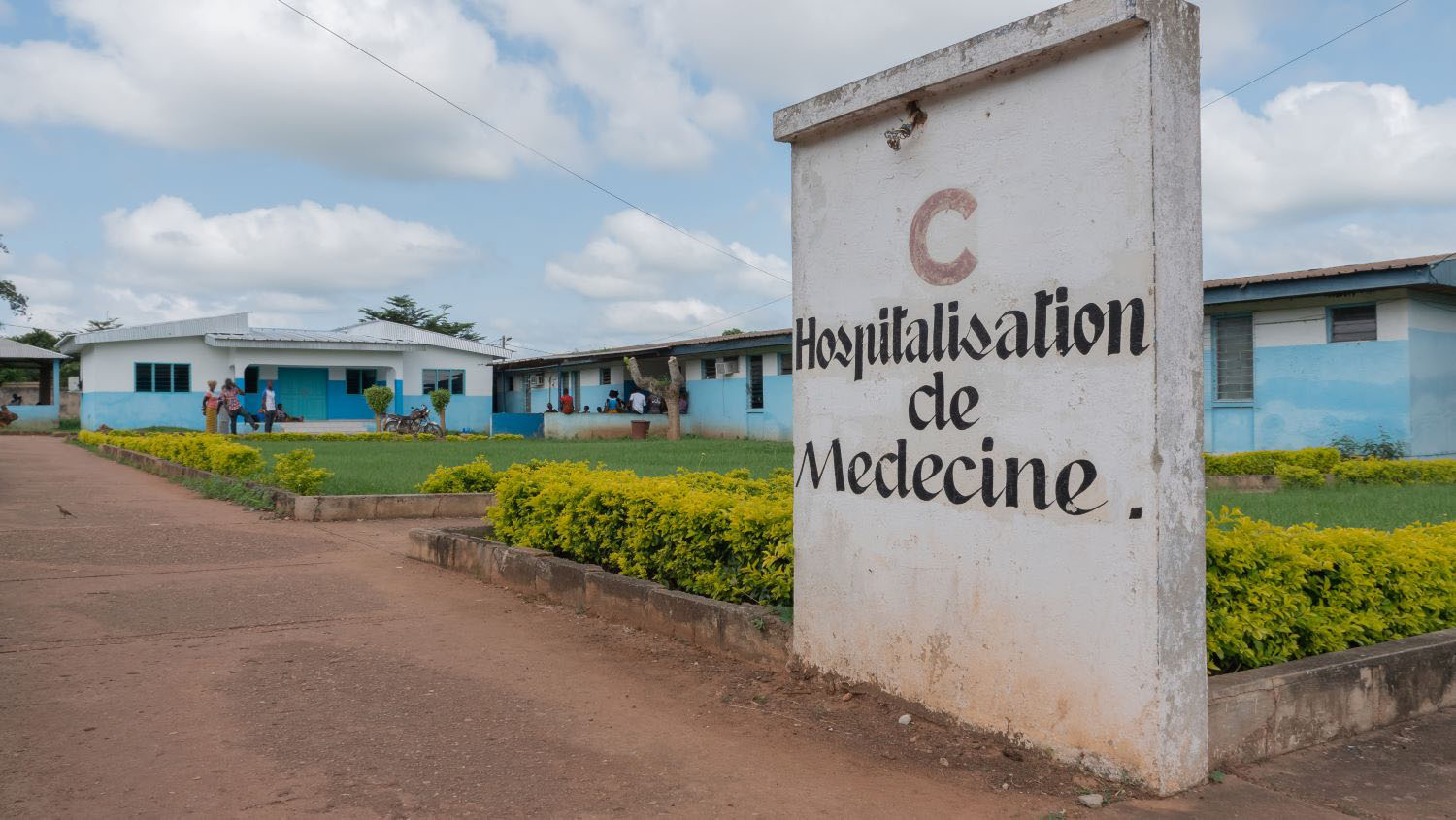Recommended

Blog Post

Blog Post
The Lancet Investing in Health Commission, led by Larry Summers and Dean Jamison in 2013, envisioned a grand convergence in key health indicators by 2035 between low-income and low-middle-income countries and the best-performing middle-income countries. Increased spending on health by developing countries, accompanied by expanding universal health care, was expected to drive this convergence. However, given significant global changes since the report's publication, it’s time to rethink this projection.
The impacts of the COVID-19 pandemic, Russia’s war in Ukraine, and heightened attention to climate transitions, together with the realization that resource availability has not met expectations, warrant a reassessment of the commission's conclusions. Consequently, the commission plans to unveil a revised report by the end of 2024.
This blog post examines the disparities between the predicted conditions outlined in the 2013 report and the actual developments that have unfolded since then. Unfavorable conditions that are expected to endure may lead resources to fall below anticipated levels, jeopardizing the feasibility of achieving the targeted convergence in health indicators. Moving forward, enhanced health indicators will require a renewed emphasis on boosting domestic resource generation. This should be coupled with increasing efficiency in resource utilization and extending external assistance to countries contending with a significant burden of interest payments, as well as the repayment of principal, on both domestic and external debt.
Economic growth aligned with projections during 2013-2022 but revenues in relation to GDP stagnated in recent years
Policies fostering high growth are crucial for generating the revenues needed to support increased public spending, including on health. The 2013 report forecasted annual growth rates of 4.5 percent, 4.3 percent, and 4.2 percent for low-income, low-middle-income, and upper-middle-income countries, respectively, from 2011 to 2035. Despite the disruptive effects of the COVID pandemic, average growth in emerging market economies (EMEs) and low-income countries (LICs) from 2013 and 2022—covering the three country groups in the 2013 report—closely mirrored the projections.
In LICs and EMEs, revenues increased by 2 to 4 percentage points of GDP on average between 1990-2011, but they stagnated between 2012-2020. During the latter period, the tax-to-GDP ratio hovered around 13 percent in LICs and 17 percent in EMEs. This stagnation, exemplified by several LICs collecting less than 10 percent revenues in relation to GDP, has impeded the necessary funding for health and overall development.
Natural resource revenues failed to contribute significantly to revenue growth
The Commission had anticipated that the discovery of new natural resources and the subsequent increase in extraction activities in developing countries would lead to higher revenues for natural resource producers. However, this expectation was not realized, as the augmented resource revenues merely displaced existing revenue streams.
A recent IMF study revealed that a one percentage point increase in natural resource tax revenue as a share of GDP corresponded to an equivalent decrease in other tax revenues. While earlier studies had identified a negative relationship between these two tax sources, the displacement of other tax revenues was previously estimated to be of a smaller magnitude.
Furthermore, the expectation that multinational companies would contribute more to tax revenues has also fallen short. Despite a recent international agreement on corporate taxation, its implementation by some advanced economies will not start until 2024, and the expected increase in tax contributions from multinational corporations has not materialized.
Taxes on tobacco and alcohol fell short of expanding the resource base as anticipated
The Commission advocated the imposition of taxes on tobacco and alcohol, aiming to generate increased revenues while concurrently curbing consumption without adversely affecting resource allocation. Although it was expected that tax receipts from these commodities would decline over time due to adjustments in consumption patterns in response to higher taxation, the overall revenues were anticipated to surpass existing levels.
The 2013 report presented tax revenues as a percentage of GDP for tobacco and alcohol across 17 countries, drawing from WHO sources. The most recent data available on alcohol and tobacco revenues from the same sources covers 10 countries (Armenia, Bulgaria, Colombia, Ghana, Jordan, Mauritius, Peru, Poland, Rwanda, and Thailand). Notably, only Mauritius has witnessed an increase in revenues from both alcohol and tobacco as a share of GDP since the report's publication. In the remaining nine countries, revenues have either plateaued or declined slightly.
Energy subsidies have notably increased
In 2013, the Commission called for reforming energy subsidies, encompassing petroleum products, electricity, natural gas, and coal, as it would not only augment budgetary resources but also contribute to lowering pollution that causes respiratory infections, cancers, and heart diseases. . The report focused on two categories of energy subsidies: explicit (pretax) and implicit (post-tax). The former denotes undercharging in comparison to production costs, while the latter refers to the estimated costs of externalities (e.g., pollution and congestion) associated with the consumption of fossil fuels.
In 2011, explicit subsidies were estimated at 0.7 percent of global GDP, and implicit subsidies at 2.9 percent of global GDP. Employing a slightly refined methodology, the IMF estimated that by 2020, explicit energy subsidies had decreased to 0.5 percent of global GDP, whereas implicit subsidies had more than doubled, reaching 6.3 percent of global GDP. Notably, this level of implicit subsidies persists despite the existence of 73 carbon pricing schemes in almost 50 countries. However, the average price of carbon stands at just $5 per ton.
Debt-to-GDP ratios and interest payments on domestic and external debt as a percentage of revenues have grown in LICs and EMEs since 2012
This has placed constraints on fiscal space, hindering the expansion of spending on social sectors, including healthcare.
From 2012 to 2022, the average debt-to-GDP ratio in LICs surged by 24 percentage points, while in EMEs, it rose by 14 percentage points. The average proportion of interest payments to revenues nearly doubled to over 9 percentage point in LICs, with EMEs experiencing a 2 percent increase. It is worth noting that the average interest payments mask a considerable variation across countries, with interest costs constituting 46 percent of revenues in Ghana and exceeding 30 percent in both Malawi and Zambia in 2022. Besides accrued interest, countries are also required to pay back the principal on loans and bonds.
Because of these considerations, until 2019, domestic health spending as a percentage of GDP remained unchanged in LICs and only modestly increased by 0.5 percent of GDP in EMEs. In response to the COVID-19 pandemic, average domestic health spending increased by 0.3 percent of GDP in LICs and by 0.6 percent of GDP in EMEs. While in EMEs, domestic health spending returned to pre-COVID levels in 2021, the good news is that it increased somewhat in LICs after remaining unchanged for years.
Despite the challenges, there is potential for expanding the resource base in both LICs and EMEs to support the goal of grand convergence. The IMF estimates that LICs could raise an additional 9 percentage points in the tax-to-GDP ratio through tax system and institutional reforms, while EMEs could achieve a 5-percentage point increase. However, achieving these goals will require a comprehensive approach, overcoming vested interests, and may progress slowly, as evidenced by a two-decade timeline for the modest increase of 2 percentage point in the tax-to-GDP ratio from 1990 to 2012 in LICs. In all countries, tax measures would need to include carbon pricing with adequate provision for shielding the most vulnerable from higher prices of essential items. Then there is scope for improving the efficiency of existing public spending, which potentially can generate up to 3 percentage points of GDP. Currently, there is a compelling argument for offering concessional external assistance to designated countries grappling with a significant burden of interest payments. This is essential to ensure that these countries possess adequate budgetary resources to sustain their social sectors, particularly in the realm of health.
In conclusion, while challenges persist, there is hope for progress for supporting the ambitious goal of a grand convergence in health indicators by 2035.
We wish to thank Benedict Clements for helpful comments.
Disclaimer
CGD blog posts reflect the views of the authors, drawing on prior research and experience in their areas of expertise. CGD is a nonpartisan, independent organization and does not take institutional positions.
Image credit for social media/web: Valeri Luzina/Adobe Stock






